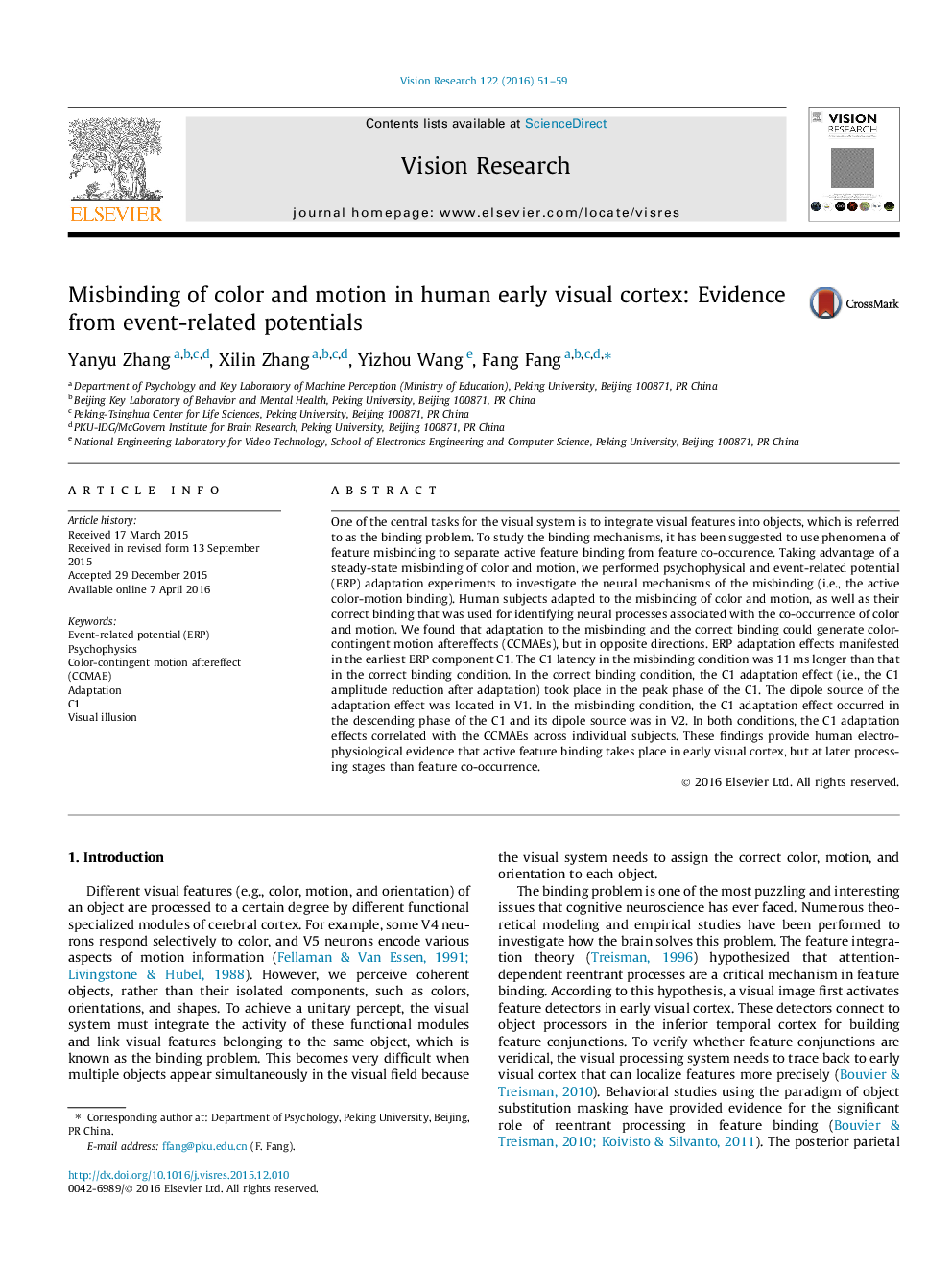| کد مقاله | کد نشریه | سال انتشار | مقاله انگلیسی | نسخه تمام متن |
|---|---|---|---|---|
| 6202979 | 1603177 | 2016 | 9 صفحه PDF | دانلود رایگان |
- Adaptation to a color-motion misbinding generates a CCMAE.
- V2 represents the misbinding of color and motion.
- V1 responds to the co-occurrence of color and motion.
One of the central tasks for the visual system is to integrate visual features into objects, which is referred to as the binding problem. To study the binding mechanisms, it has been suggested to use phenomena of feature misbinding to separate active feature binding from feature co-occurence. Taking advantage of a steady-state misbinding of color and motion, we performed psychophysical and event-related potential (ERP) adaptation experiments to investigate the neural mechanisms of the misbinding (i.e., the active color-motion binding). Human subjects adapted to the misbinding of color and motion, as well as their correct binding that was used for identifying neural processes associated with the co-occurrence of color and motion. We found that adaptation to the misbinding and the correct binding could generate color-contingent motion aftereffects (CCMAEs), but in opposite directions. ERP adaptation effects manifested in the earliest ERP component C1. The C1 latency in the misbinding condition was 11Â ms longer than that in the correct binding condition. In the correct binding condition, the C1 adaptation effect (i.e., the C1 amplitude reduction after adaptation) took place in the peak phase of the C1. The dipole source of the adaptation effect was located in V1. In the misbinding condition, the C1 adaptation effect occurred in the descending phase of the C1 and its dipole source was in V2. In both conditions, the C1 adaptation effects correlated with the CCMAEs across individual subjects. These findings provide human electrophysiological evidence that active feature binding takes place in early visual cortex, but at later processing stages than feature co-occurrence.
Journal: Vision Research - Volume 122, May 2016, Pages 51-59
